The Nearly Perfect 10 Day Trip to Myanmar – Leg 2: Bagan
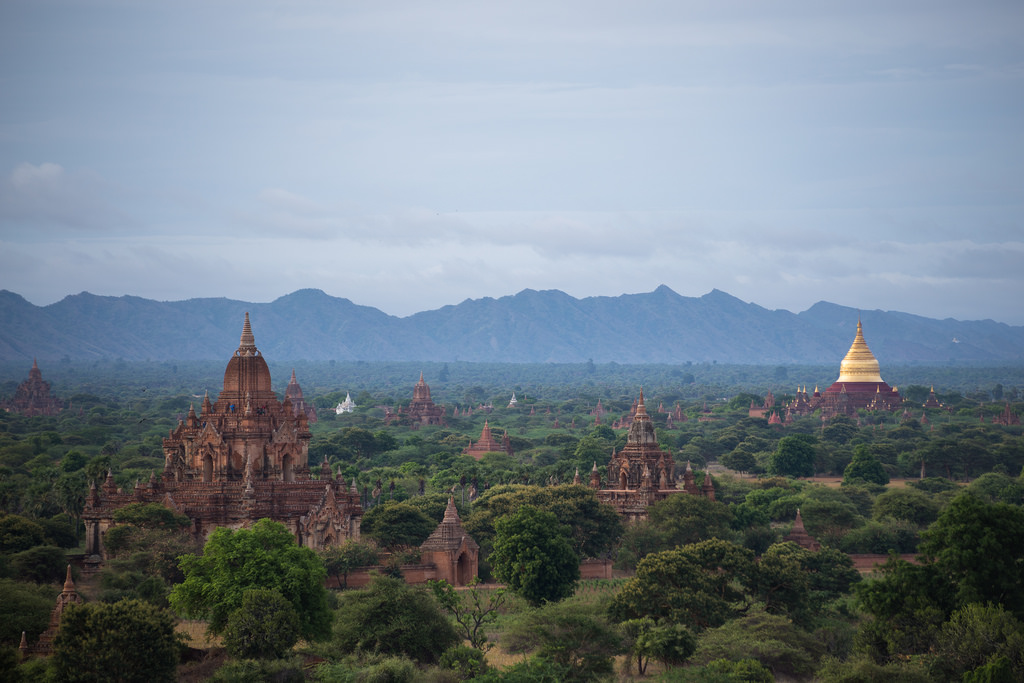
Sadly, due to recent events, I’m adding this note and suspending the series before completing Part III. In October and November 2016, an increase in violence in the northern regions has led to a number of village burnings and significant loss of life. As a result, I encourage anyone considering a visit to research events and the current status before making any decisions. For the time being, it looks like many of the recent gains made are being eroded.
Welcome to Part II of my three part series exploring Myanmar. When we decided to visit Myanmar, we wanted to explore a country we knew very little about. You can read up on all of the misconceptions we had before going in this post. Just joining? Jump back to Part I here.
Myanmar (formerly Burma), is a wonderful country that recently started to open up again to travel. To recap my previous post, it’s; 1) safe 2) easy to get around 3 ) easy to access 4) still very affordable and, 5) already has a comfortable tourist infrastructure. For some familiar with the earthquake in August 2016, the majority of the damage was to repairs that had been made during a controversial series of repairs 10-20 years ago. In essence, it wiped the slate clean. Everything I’ve seen and read says that most of the temples and pagodas impacted are being repaired rapidly and will re-open soon, if they have not already done so.
It’s also worth noting that the famous balloons over Bagan only fly seasonally. So, if you go in July like we did, you will not see them. They’re also extremely expensive. Lastly, we didn’t fly, but apparently most of the material about the internal airlines being extremely unsafe is 2+ years out of date with the Government overhauling things and replacing aged aircraft with new ones.
Bagan
The overnight bus rolled into Nyaung-U just before sunrise. The ride northward had been pleasant. The JJ-Bus company which had been suggested had new and well maintained buses that made the trip about as comfortable as flying business class five years ago. As the bus rolled into the bus station parking lot, taxi drivers ran along side playing a surprisingly dangerous and reckless game of chicken. I felt a knot grow in my stomach anticipating the press of pushy, obnoxious hawkers, taxi drivers, and scam artists as soon as we disembarked.
To my surprise, despite the press and jostle, as soon as we stepped off the bus they were inquisitive but no where near as in-your-face as I had expected and been dreading. Over the loud speakers, there was a recording announcing the fare into New Bagan was about $8. The “fixers” who were more fluent in English and then funneled people to the taxi drivers attempted to start closer to 20. Ultimately, after a bit of back and forth and with the next bus rolling in, we ended up agreeing on $12 including pausing at the Shwesandaw Pagoda to catch the sunrise.
As we raced through the deserted streets that roughly demarcate the outer edge of the temple zone of Bagan we paused at the entry gate. The gate took us completely by surprise as there had not been any mention by the bus company or in the preliminary material we read. In reality, we shouldn’t have been surprised, as it’s only logical that zones like Bagan (and later Inle Lake) charge park fees. Entry was $20 for a multi-day ticket which was payable in USD or 25,000 KYAT. Do make sure you’ve planned ahead as there were no ATMs in either location and I’m not sure what would have happened had we not managed to scrape the funds together.
Our ascent to the viewing level of the multi-terraced pagoda was exciting and a race against time as the sun clawed its way into the sky, the early morning light rapidly consuming vibrant colors and bringing the landscape into focus. Though the hand railing on the stairs had been re-painted, my hands quickly took on the color of brick-dust combined with rust from gaps in the all-weather paint. By the time we reached the top we were greeted by a light dusting of tourists. The advantage of visiting in late July meant that what might have otherwise been a sardine-can of tourists in peak season was little more than a mishmash of 20 or so travelers pausing for photos, enjoying the moment, and snapping selfies.
While the sunrise was gorgeous, subtle rose hues spreading across the valley and kissing the plethora of curves, stair-steps and pointy rooftops that mark the landscape, it lacked the drama you often see in photos. As the last hints of color faded and sun revealed the full details of the landscape which, quite literally, stretched out before our feet, it finally felt as though we’d arrived. Hours of flights, our overnight bus ride…all of it…was with the goal of reaching this spot and enjoying this moment.
The view didn’t disappoint. The valley is covered in small temples which stick up above the tree line. In some ways it reminded me of a much-less-overgrown Tikal while still having some of the curves and personalty that makes Angkor such a mystical place. Yet, the actual composition of the valley floor with fields, forest, and a seemingly random mixture of temples and pagodas serves up a distinctly original experience.
With the sun up and our taxi waiting we returned to the fine sand parking lot and made our way to our hotel in New Bagan. As it turned out, all of our fretting over where to stay was largely irrelevant. Hands down, New Bagan was the ideal location. It had food, ample and easy access to the Temples and was full of modern accommodation. Our lovely little hotel had great water, a fantastic included breakfast, and air conditioning all for about $35/night split between David and I. Interestingly, the hostel next door was priced relatively similarly (per person) and with meal prices in the 3,000s not only failed to reflect the local economy, but was priced at near European levels.
Exploring Bagan
There’s really only one way to explore Bagan, and that’s with their e-bikes. For about $5 a day, potentially inclusive of free laundry, you can rent an electric bike to transport you around the park. This is a FANTASTIC way to get around, even if you’re not a moped or e-bike veteran as the roads are low trafficked and easy to navigate. The catch is that many of the bikes have aging batteries. If you’re planning on doing a lot of driving this is NOT ideal and while the locals are happy to come out and replace the bike if it dies on you, it’s not always terribly pleasant. In this capacity, do make sure to be adamant about requesting a newer bike with a new battery.
Despite the warnings, I was not overly vigorous in my selection process. This led, initially, to a partially rusted key breaking off in the ignition of one bike, and later as we returned from watching the sunset, in the dark, a dead battery and me doing an awkwardly hilarious version of Fred Flintstone for several kilometers. Luckily, the park is extremely safe, and as covered in Part I of this series, the locals are profoundly helpful and kind. In both cases complete strangers paused, asking if we were ok, and offering to help while going out of their way. This included everything from helping us by making phone calls, to aid with pushing the bike. It’s also worth warning against riding double on the bikes. While we saw a lot of women or couples doing this, the level of safety, especially on dirt/sand roads and paths, was actually significantly lower than had they, even inexperienced, been driving themselves.
While getting around and visiting all of the major temples by e-bike was easy and took most of a day, the absolute highlight for us was when we struck out into the middle of the park and the back roads and remote trails. With more than 2,000 pagodas and lesser temples still standing, Bagan is crisscrossed with wonderfully intimate structures where you’re entirely alone. It’s also the best way to access peanut fields and grazing areas where locals are still hard at work planting, managing and harvesting their crops. If there’s a dusty cow path, small trail, or lesser road, it’s all open and fair game to explore. Just make sure to take it slow and to do your best to avoid a face full of sand.
For both David and I, the hours we spent “lost” in inner Bagan were the most magical of the trip. It still felt raw, undiscovered, and yet wonderfully accessible. The perfect combination of archaeological visit combined with summer road trip. The park’s climate also contributed to this and was a significant surprise. Where I expected lush jungle a bit like Cambodia and Angkor, the landscape of Bagan is quite different. With loamy soil that is more sand than clay and scrub brush, it’s more cat-claw and palm tree than fern and jungle. This also means it’s not only hot and humid, but that packing extra water is an absolute must and safety concern.
Access to the temples and pagodas is a bit of a trick thing. Most are free, though for the larger ones you may need to show your Park Entrance Card. In some you’ll find a local vendor eager to help, who will, inevitably, ask to show you their wares and try and sell you something. Most were not pushy and easy enough to dismiss, especially if we didn’t engage in an in-depth conversation. Strangely, in the cases where we did, they were evasive about a trip in exchange for advice focusing almost entirely on selling products. We never were able to confirm if this is due to some sort of regulation, a cultural element, or just part of their sales tactic.
Many of the mid-sized pagodas include mildly bat infested internal stairways that allow you to scale higher levels within the pagodas/temples. Taking a small flashlight (or your phone) is sufficient as most are unlit and unmarked. I’m not sure how this will have changed after August’s earthquake, but I imagine that, with sufficient caution, many of these are still standing and accessible. Do make sure to use extreme care if you scale higher on the pagoda/temple, as the crumbling nature of the bricks can make for a somewhat precarious experience. Also, make sure not to pass the areas accessible by stairways/steps and/or to climb onto the onion-portion of the pagodas, as this is the holy part. Of course, also take great care not to accidentally damage the pagoda/temple and always to clean up after yourself. While the larger temples/pagodas are best for sunrise and sunset due to their height and their vantage point, the more intimate experience in the smaller pagodas is not to be overlooked.
Photographing Bagan
In preparing for our visit to Myanmar, I knew I wanted to photograph Bagan. Yet, I had a few concerns – namely, what to expect visiting in July? People told me it would be rainy, but only an hour or two a day, and generally left it at that. Fair enough. The good news was, we got virtually no rain during our visit and the weather was stunning. The less-ideal news from a photographers standpoint was that to capture the quintessential photo of Bagan with Temples, Hot Air Balloons, and rising mist with an orange glow is….not an option in July.
- The hot air balloons in Bagan only fly during peak season. Not only this, but they also charge a ridiculous amount ($300+ per person). For reference, that’s more or less the same price as what I’d pay if I did a multi-hour flight here in Denmark and roughly 2-3x what you’d pay for a hot air balloon ride over Cappadocia in Turkey. So, even if I wasn’t willing to shell out for the insane price they were asking for a flight, getting that Bagan+Balloon photo? Not possible most of the year.
- What you see in most of the misty photos of Bagan is not mist. It’s smoke from burning season. This is familiar for anyone who has spent time in parts of Africa. The upside for photographers? Burning season creates incredible haze which is amber/gold and leads to brilliant sunrises and sunsets. The downside? During the rest of the day the smoke in the air absolutely sucks. For our visit in July, no one was burning and the rains pulled most pollutants from the air. As a result, you can see in my photos that while gorgeous and some lovely sunsets, they were mild and the intensity wasn’t there.
- Most of the most intense shots have been taken with a yellow/orange filter and/or been further edited quite heavily.
- You’ll need to check the status of the temples after the earthquake. However, for sunrise we found Shwesandaw Pagoda was good, if busy, while for sunset we found Pyathagyi Hpaya to be ideal. While height is useful for capturing good shots, some of the larger temples are actually too tall which reduces some of the drama of capturing the sea of temples and pagodas pushing up through the canopy.
- Keep an eye out at sunset for the herdsmen moving the herd. At Pyathagyi Hpaya in particular, we had the opportunity to watch a number of large herds driven past which added to the ambiance and made for great photography.
- Get out into the fields, it’s where you’ll find farmers ploughing with oxen, gorgeous views of the temples, and more personable moments.
- While some of the larger temples/pagodas and the area in Old Bagan (inside the city walls) locks up int he evening, much of the park is completely open. While you’ll need to return your e-bike in most cases shortly after dark, it did seem as though night photography would have been possible.
- I didn’t run into any issues shooting with a tripod (externally).
You’ll find my full color album from Bagan here, and my black and white album on flickr here.
Food
When reading guides to Bagan, one of the topics we had a lot of trouble getting a straight answer on was food. Long story short, there’s plenty to eat in New Began across a large range of budgets, and anyone writing to the contrary is full of turkey-stuffing. There were a number of touristic restaurants immediately around our hotel and the nearby hostel. Most were charging between 3,500 and 4,500 kyat a dish and another 1,000 or so for a drink. Not terrible, but also egregiously over priced by local standards. The advantage was, this was a viable option if you wanted safe tourist food. There were also finer dining options in the area for 7-11,000 kyat a dish. For the most part, David and I opted for a local place down the road where despite eating 2 dinners a piece + drinks we normally paid less than 3,000 kyat in total. While we passed on drinking water from the communal clay water jug, the food was good and left us in good shape. While I can’t speak to Old Bagan, from the sound of it, it looks like it’s much more expensive and mirrors the cost of hotels in the area.
Other Things to Do
With just two nights in Bagan we spent the vast majority of our time wandering the countryside. This provided us with a number of sunrises and sunsets – just about the right number, to be honest, given that the weather prevented eye-wateringly gorgeous sunrises or sunsets. But, not quite enough time to explore everything that was to be seen in and around Bagan. In addition to the main temples and pagodas, you have the option to traverse the river (including watching sunset) and a road trip to a near by mountaintop temple, Mount Popa. While, personally, I don’t get off scaling steps just for the sake of it, and we ultimately decided against going as the view looked to be relatively bland, everyone we spoke to said they had enjoyed the trip and the view. There’s also the archaeology museum which we heard wonderful things of, village visits, and surrounding towns which you can explore.
Ultimately, I’m happy with the mixture of experiences we aimed for and our more do-it-yourself approach. However, there was definitely plenty left to see/do/explore and we easily could have added an additional day.
New Friends
One of the final highlights from our time in Bagan was social. I often talk about how easy it is to meet people on the road, but rarely actually provide examples. In Yangon, we shared a taxi with a woman who was traveling solo and ended up being on the same overnight bus. By the time we arrived in Bagan we agreed to keep in touch and coordinate. Simultaneously she met an Ecuadorian woman who was on exchange in South Korea and in Myanmar for a few days visiting some friends. The friends, who were Burmese were parting ways, which led the other two to pair up and travel together, eventually joining us (or vice versa) for the final trip to Inle Lake.
On the morning of our arrival we all got introduced atop Shwesandaw Pagoda and coordinated meeting up for food, sunsets, and sunrises while exploring Bagan over the following several days. For the women, both of whom were traveling solo, it streamlined the process, while for David and I it added a nice social component that we were missing as we’d opted for Hotels vs. the Hostels. As four people, it opened up things, such as renting a boat for the day in Inle Lake, which would have other wise been more cost prohibitive for David and I alone. They also came to my rescue and kept David and I company when my e-bike died, late at night, on our way home from the pagoda (which led to a ridiculous number of laughs) while simultaneously feeling a bit more comfortable being out and about after dark. The Ecuadorian was also able to line up, and suggest a number of great activities in Inle Lake through her Burmese friends which David and I would have otherwise likely completely missed.
Throughout it all, things were entirely platonic, relaxed, and we were able to travel as long as we all found convenient while enjoying each other’s company. Which is also to illustrate, that not only is there sufficient tourist infrastructure for solo-backpackers in the region, but that there are quite a few female solo travelers visiting Bagan and Myanmar. The added advantage of it being a fairly cozy and reliable route from Yangon to Bagan to Inle and Mandalay and back to Yangon is also that you see many familiar faces over the course of your trip. A friendly hello, and quick chat while waiting for the sunrise or your bus opens up travel opportunities and social options even if you’re on your own or not set up in a hostel dorm.
Bagan to Inle Lake
Due to time limitations we ultimately decided to cut straight to Inle Lake bypassing Mandalay. Unfortunately, the JJ Buses were only running from Bagan to Inle Lake every-other day in late July. Due to timing considerations we opted for taking a mini-van which involved a safe, but tiring 9 hour trip packed into an 11 person tourist bus. While not the joy of my life, it was relatively comfortable and did provide the opportunity to see the countryside, which an overnight bus would not have. The cost was about $15 per person.
The drive from Bagan to Inle Lake is beautiful. You wind through a variety of different climates and small towns, rolling rice fields, and eventually cut up into lush tropical jungle. The route, which takes you up a rather grueling series of switchbacks is vomit-worthy, but provides stunning vistas before eventually dropping you down and into the valley basin which holds Inle Lake. The bus deposited some members of the group about a dozen miles outside of Inle Lake in the mountains where they’d proceed to trek down to Inle over several days, while David, the women, and I continued on directly into Inle Lake.
Have a question about the experience or something in this post? Drop me a comment and I’ll be happy to elaborate.
Stay tuned for Part III where I share and reflect on Inle Lake and the final stage of our trip through Myanmar. You’ll find my full color album from Bagan here, and my black and white album on flickr here. All shots are taken on a Canon 6D and if you’d like to support the blog, click through the affiliate link the next time you browse on Amazon.
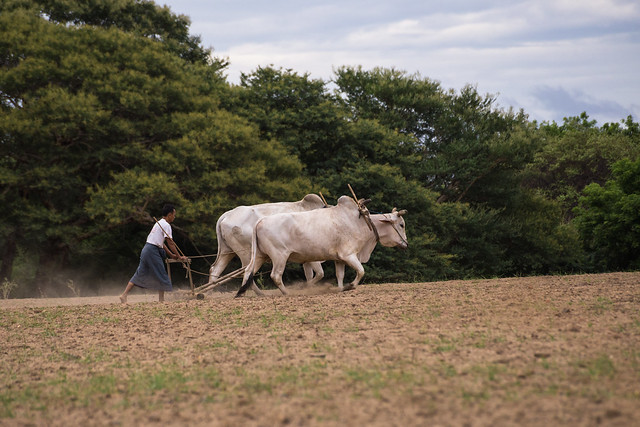
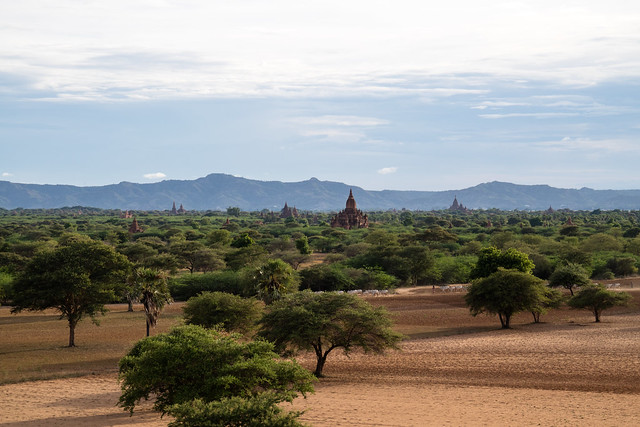
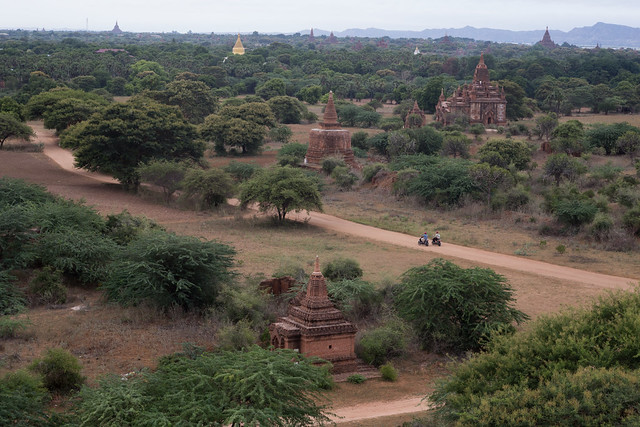
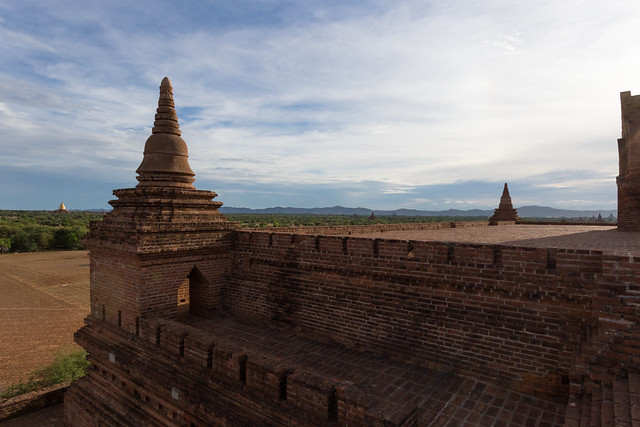
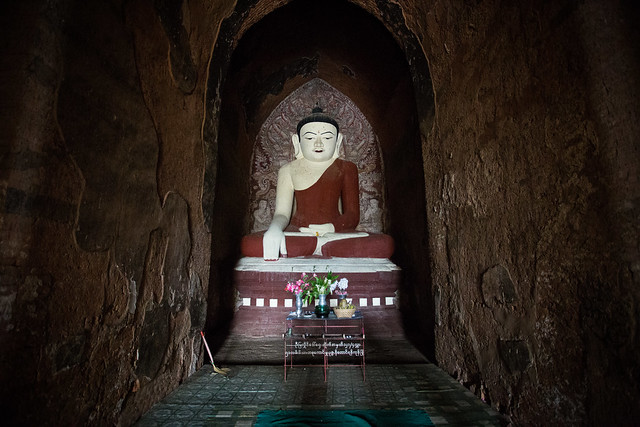
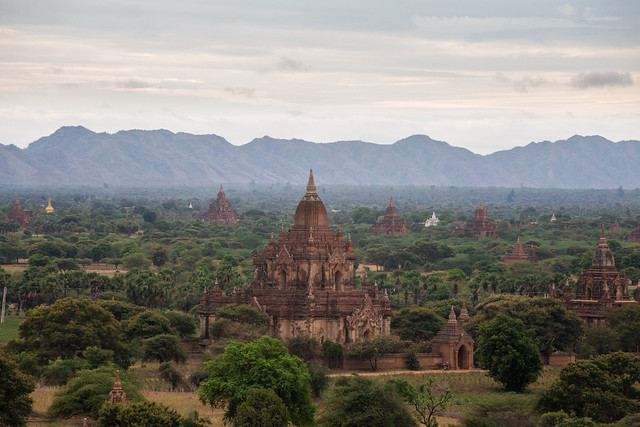
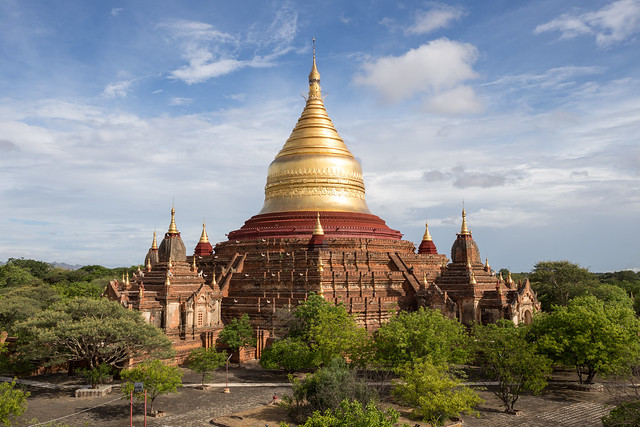
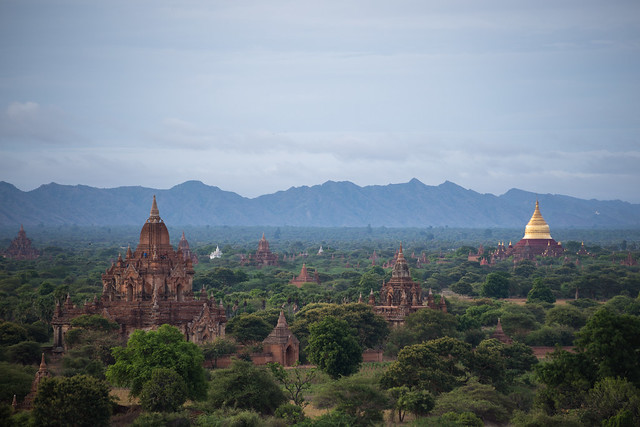
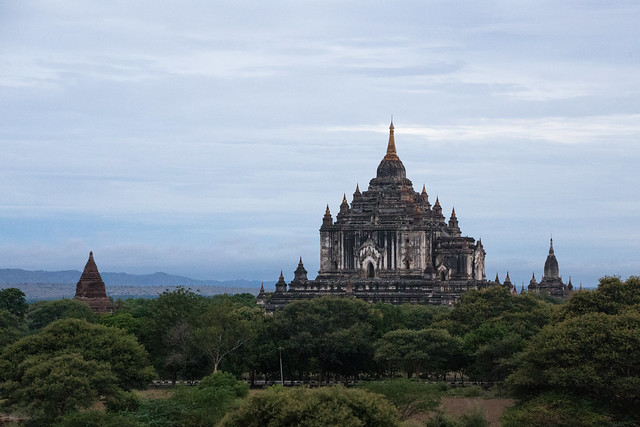
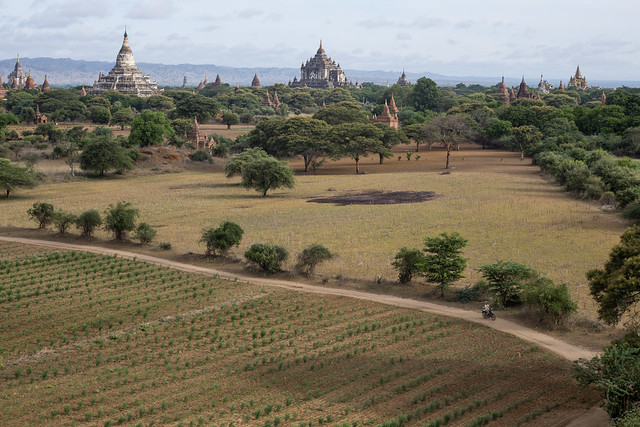
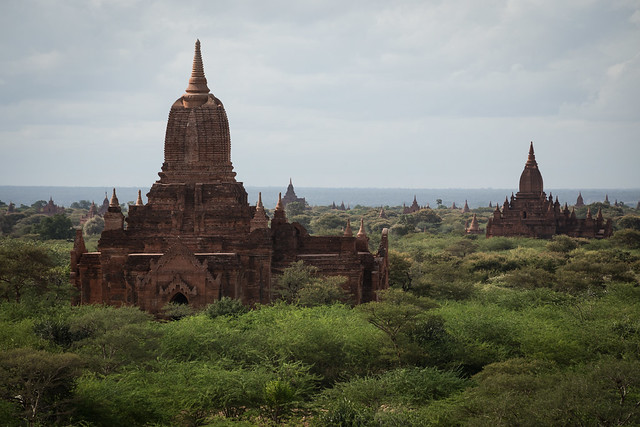
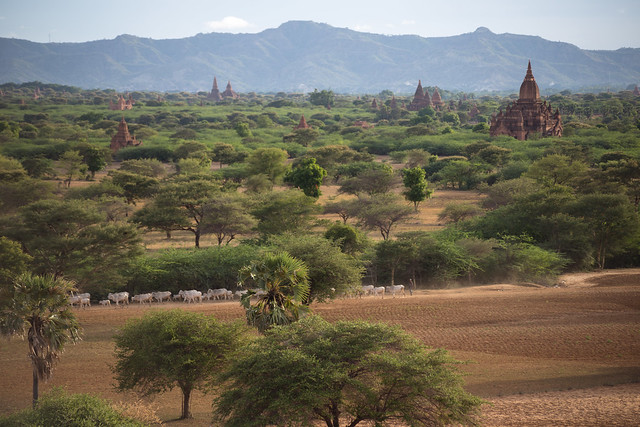
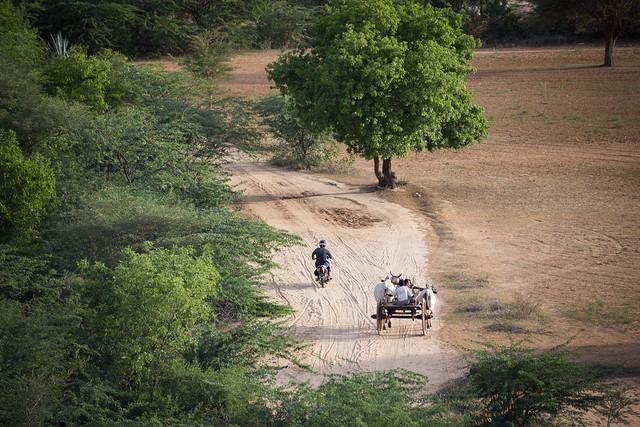
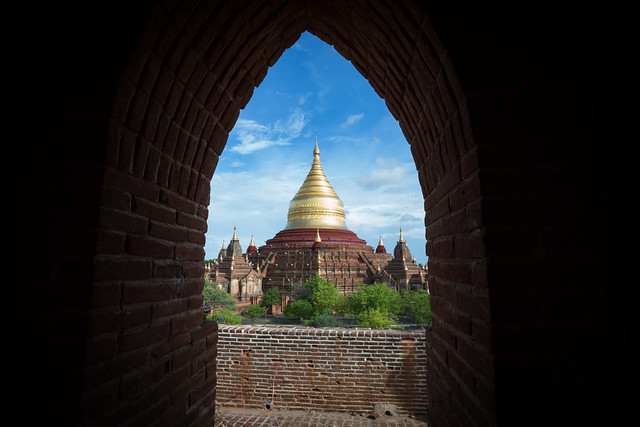
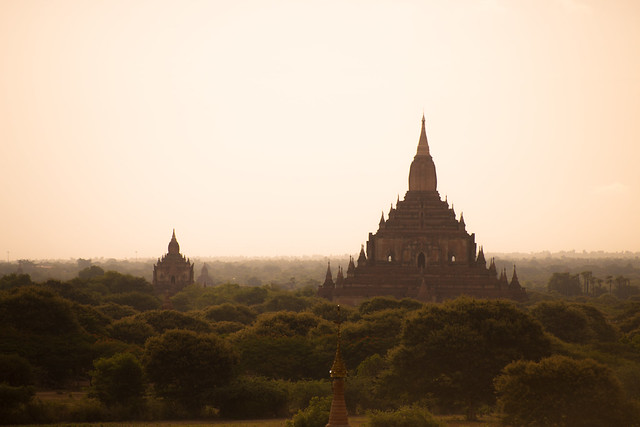
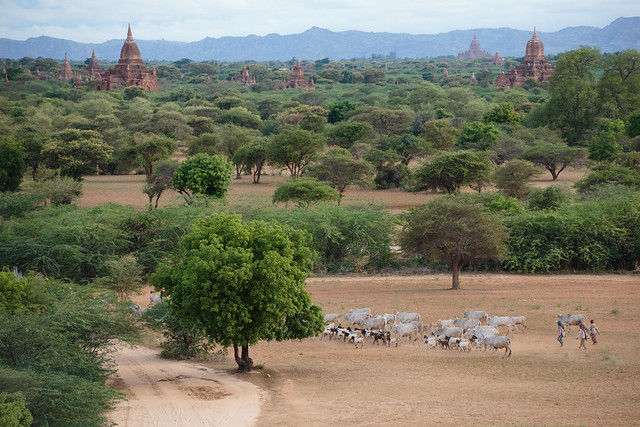
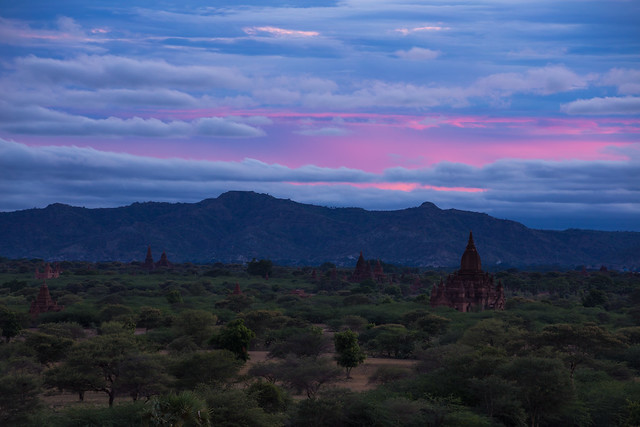
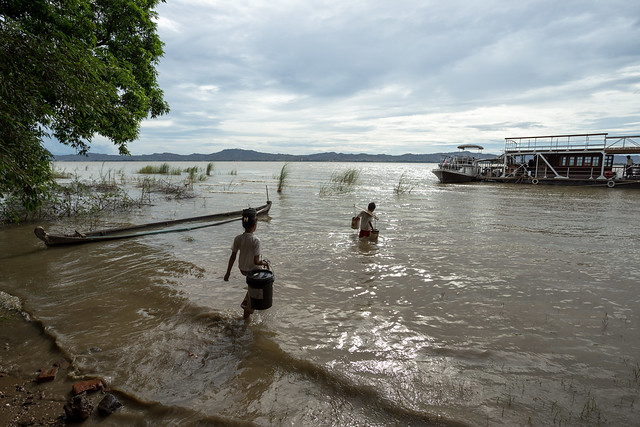
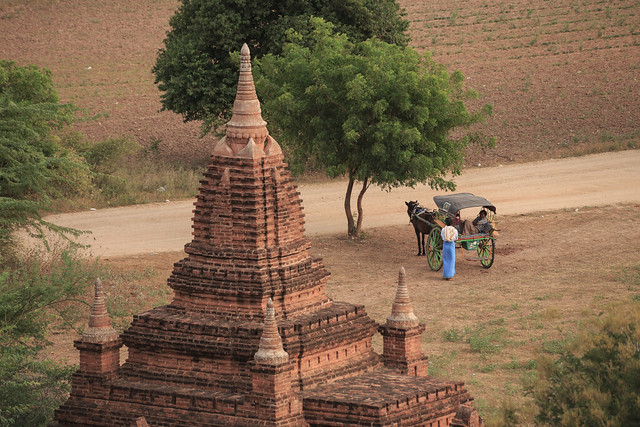
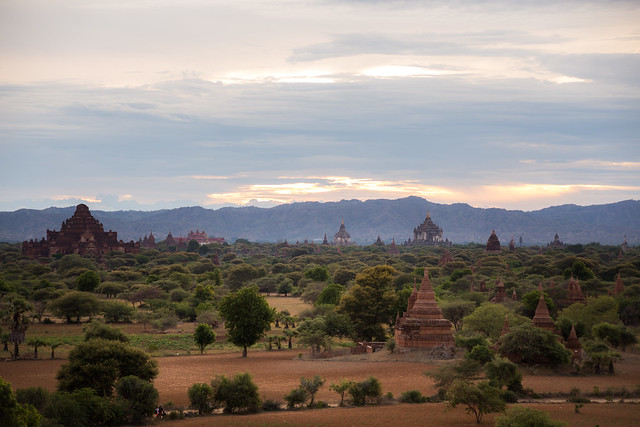
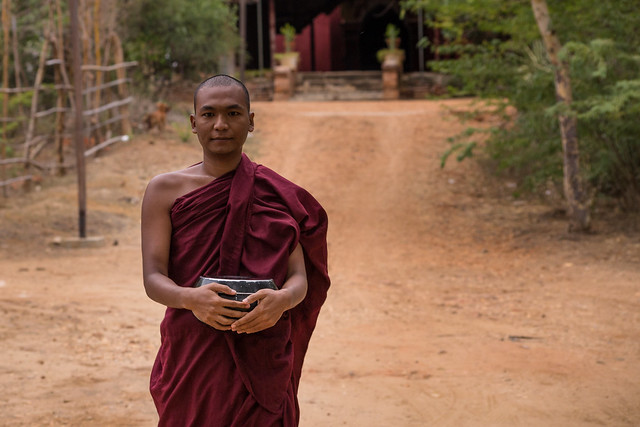
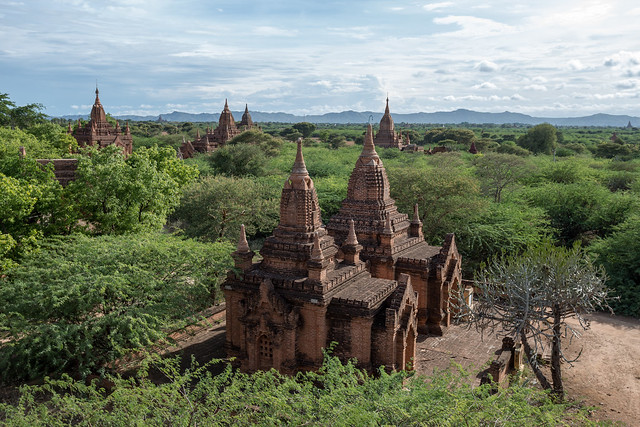
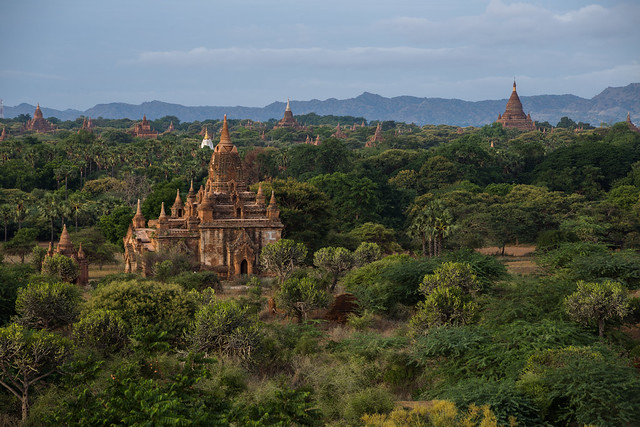
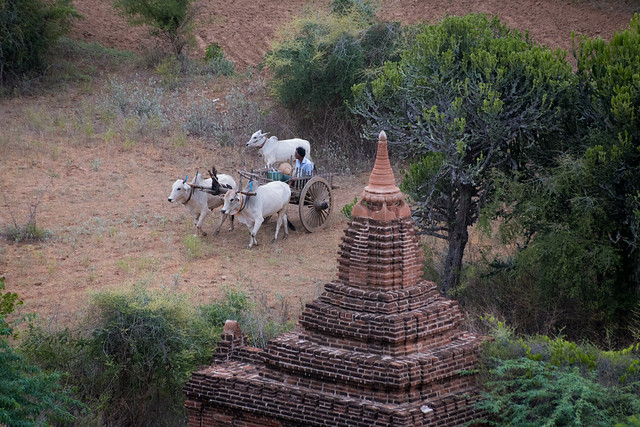
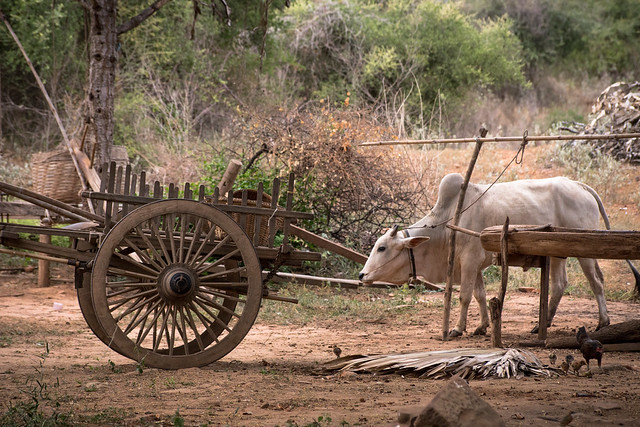
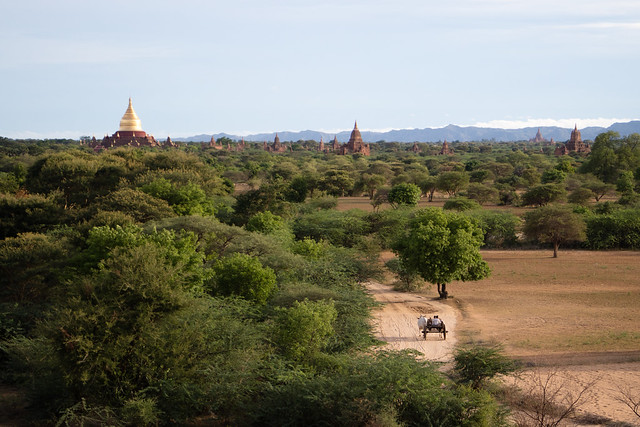
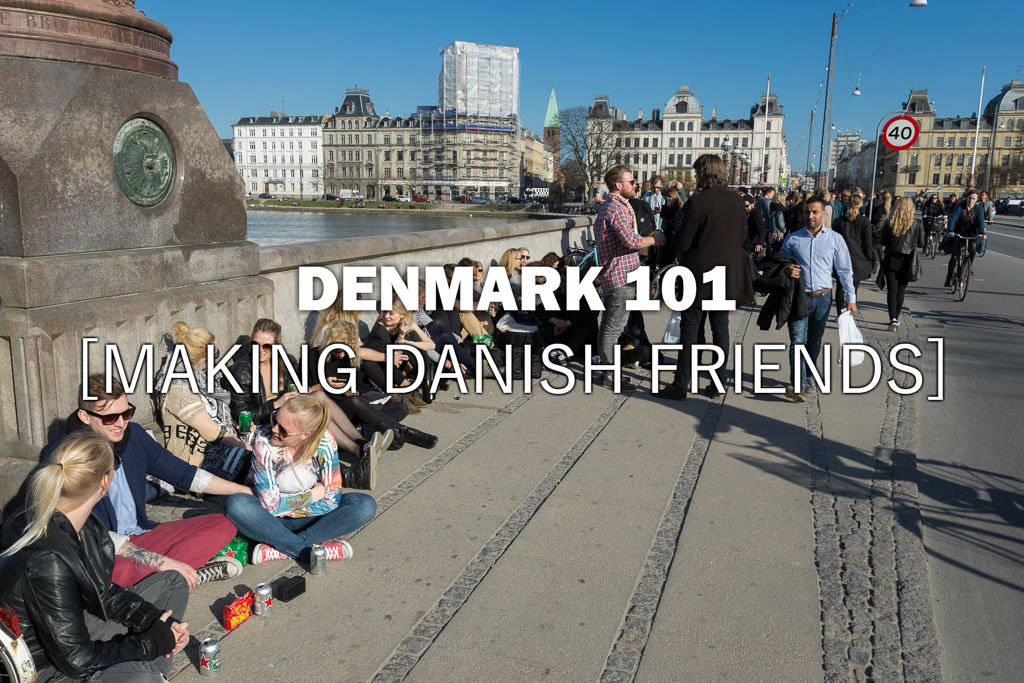
What a great post you shared. So stunning pics you shared. Thank you so much for sharing it.
Myanmar is beautiful. I’ve been wanting to go for the longest time but the wife doesn’t. She saw the Myanmar episode of No Reservations and was turned off by the transportation options. (those train toilets! LOL)
I haven’t seen that episode! All I can say is I didn’t have a single unpleasant toilet experience during the trip. Make sure to show her my other post about our misconceptions about Myanmar